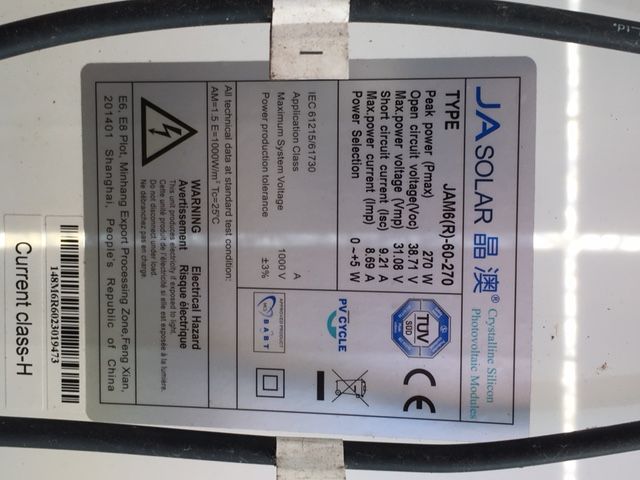Posted by Peter Bell on 05/04/2021 13:10:59:
Thanks for all the constructive replies. To give a bit more of the picture I initially bought a "piped" panel system but it proved difficult to plumb in to my system as it was then. We now use an air source heat pump to a thermal store and have underfloor heating from that, all home grown and installed. The hot water cylinder is heated by the ASHP with the supply controlled by motorised valves on demand. It's stored at 35c and the final water to taps is boosted to 50c by on demand by elec heaters.
The on demand elec heaters can take feed water at up to 80c but obviously would be switched off so I decided if I could boost the cyl temp feeding them anything would be a bonus. I have never achieved more than 60c even in the summer hence my question about better matching of my panels to an immersion heater. I'm trying to avoid batteries and grid tie and had wondered if one of the solar type inverters would accept a dc supply direct from the panels and output 240v for the immersion?
Peter
And Also:
John, my panels produce 8.69a at 31v each according to the spec. I did some testing when I first got them and I'm sure they produced something like that but I need to do more. This video goes into it and the chap also has an interesting spread sheet.
What is important to realise with solar panels is that they are primarily a constant current device, but with a very non-linear delivery curve.
Connecting a solar panel directly to a heating element is the most inefficient way of doing this – Under bright sun conditions this is the mode that the panel will deliver its maximum current, but at very reduced panel voltage. Since Watts = Volts X Amps…
Cheap solar chargers are a PWM based direct connect, ie, connect the panel to the battery till the voltage = cutoff then disconnect, so the delivered watts can only be BatVoltage X charge current.
Cheap PWM convertor chargers are a 'proper' DC-DC converter, taking in panel volts and converting to battery volts ( or the voltage required by your heating element) and trying to maintain that, regardless of panel input voltage – also very inefficient – still Watts = BatVoltage X charge current
DC-DC MPPT converters however make the most of the panel available Power – MPPT = Mean Power Point Tracking. The converters monitor the output voltage to make sure it maintains that voltage best it can, and does all the monitoring of output current, etc to ensure the attached battery, or element, is not over stressed. The latter functions are also 'sort off' performed by the cheap chargers mentioned above.
However, the big difference is that an MPPT converter will manipulate the output voltage and current to maintain a INPUT current and INPUT voltage, such that the product of these is a maximum. If the panel in good sun can deliver 10amps, and we place a 1 ohm resistor across it, we get 10amps at 10volts from the panel. That's 100watts.
That same panel will however be able to deliver 10amps at its nominal 14.5volt output as well ( assuming a 10amp '12volts' type panel – around 22-23 volts open circuit) That's 145 watts = 50% more. It cannot generate a 14.5v potential on its output with a 10ohm resistor, since the output limit is 10amps…So an MPPT charger will increase or reduce the output voltage to ensure the input watts are max, and therefore the delivered output watts are max as well. The MPPT device is also a DC-DC converter so will step up or down the panel voltage to track the optimum power point
So, you should really get an MPPT element controller for a water heating element – An inverter will 'work' but suffers the same problem as the cheap PWM converter – it simply loads the panel as much as possible to get 220VAC out…
If you have agents for VICTRON, contact them – they have some good solutions.
Joe
EDIT – Just to add –
If you use mains to supplement the water heating, ie, for sunless days, there are also simple timers available that you can easily connect to the mains supply so that, for instance, the mains is only enabled for water heating, perhaps 1 or 2 hours before shower/bath time, etc. ( and add a temp sense to the same timer so that if the water is hot, the mains does nothing..) Easier than trying to know what the day's WX is going to be..
Edited By Joseph Noci 1 on 06/04/2021 10:30:04
Peter Bell.



 on the immersion heater. Over the past week when it has been sunny the water has been toasty every day with little extra input from mains overnight, and from now on then our water heatig (and evening cooking) will be effectively free until autumn. We are on our 3rd iBoost unit, the previous 2 blew their main fuse for no apparent reason after a few months, but I think they must have fixed that.
on the immersion heater. Over the past week when it has been sunny the water has been toasty every day with little extra input from mains overnight, and from now on then our water heatig (and evening cooking) will be effectively free until autumn. We are on our 3rd iBoost unit, the previous 2 blew their main fuse for no apparent reason after a few months, but I think they must have fixed that.

